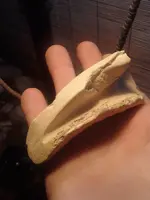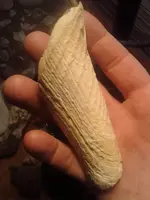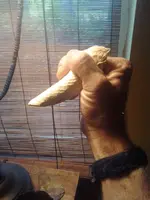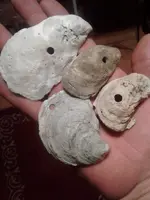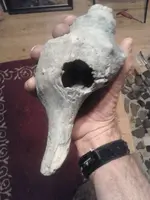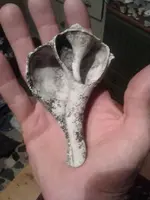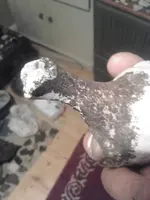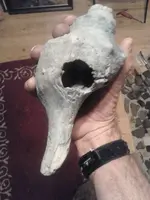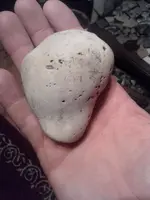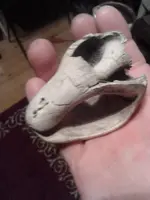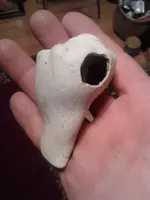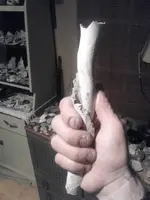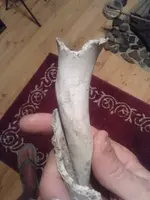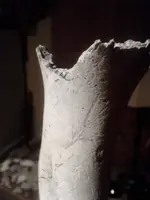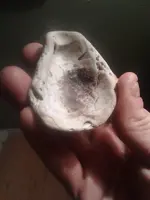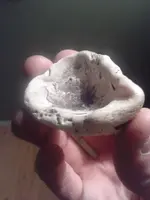All those pics were the same two artifacts.
Yes, they were hafted as is, with a handle going through the notch in the lip and out the hole on the other end, and then lashed together, sometimes using another hole in the top. This would give the tool's bit the proper angle for adzing. I think this tool/adze was used almost exclusively on canoes, scooping out wood that was charred. I think the handle was not long.
As this tool is used the hafting hole opposite the hafting notch becomes damaged, as well as the notch. The bit takes damage. They could often break more off the lip, renotch it and make a new hafting hole or rearrange the sinew/cordage. Eventually such a tool can become more of a hammer, then maybe a plummet when only the columnella is worth anything. Continuum of wear and use. FL museum of nat'l history has made some distinctions in that continuum and call them by types A through D and describe as adze to hammer in various stages of breakdown and use,.
They are usually found discarded with bit broken off, or notch gone and lip destroyed (some do not have notches and are perfect, the notch was not always necessary) or hafting hole completely blown out. Since they looked for particularly robust individual shells to make this tool, the columnella is also thicker. Better for making nice big plummets LOL.
All below are Busycon/Lightning Whelk shell tools, except where noted.
Type A, cutting edge
Type B, cutting edge
Type B hammer, Horse Conch
Type C, hammer
Type D, hammer, at this point they also used the columnella as a hand handle and bashed with the bigger end, whorl.
A type D hammer made of Horse Conch
Type G, King's Crown Conch
top hafting hole, if present, is always between 80 to 120 degrees on the whorl with zero at the end of the suture.



